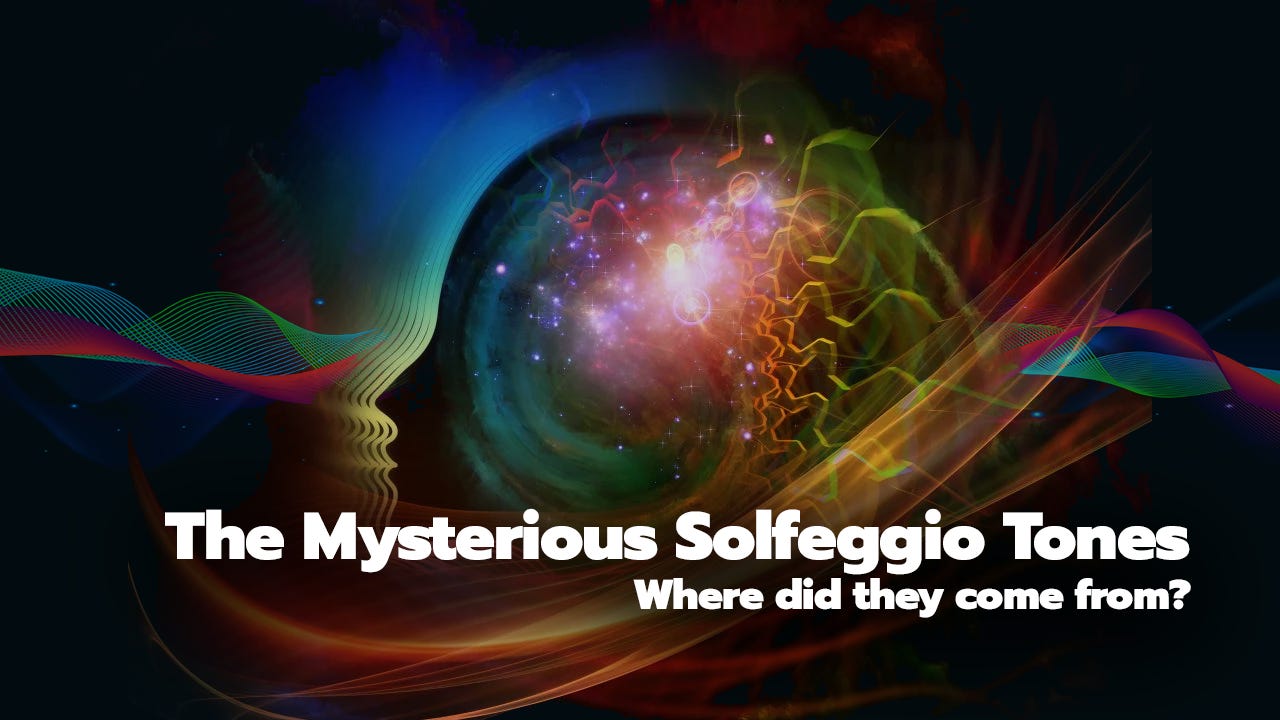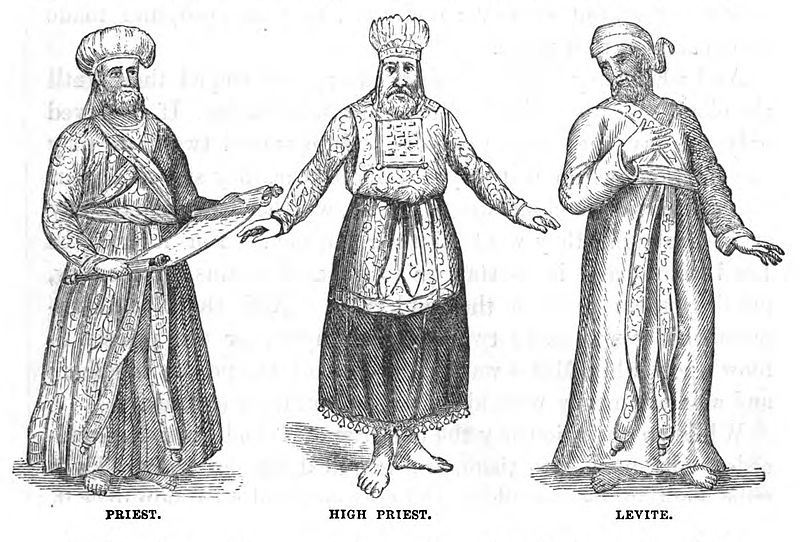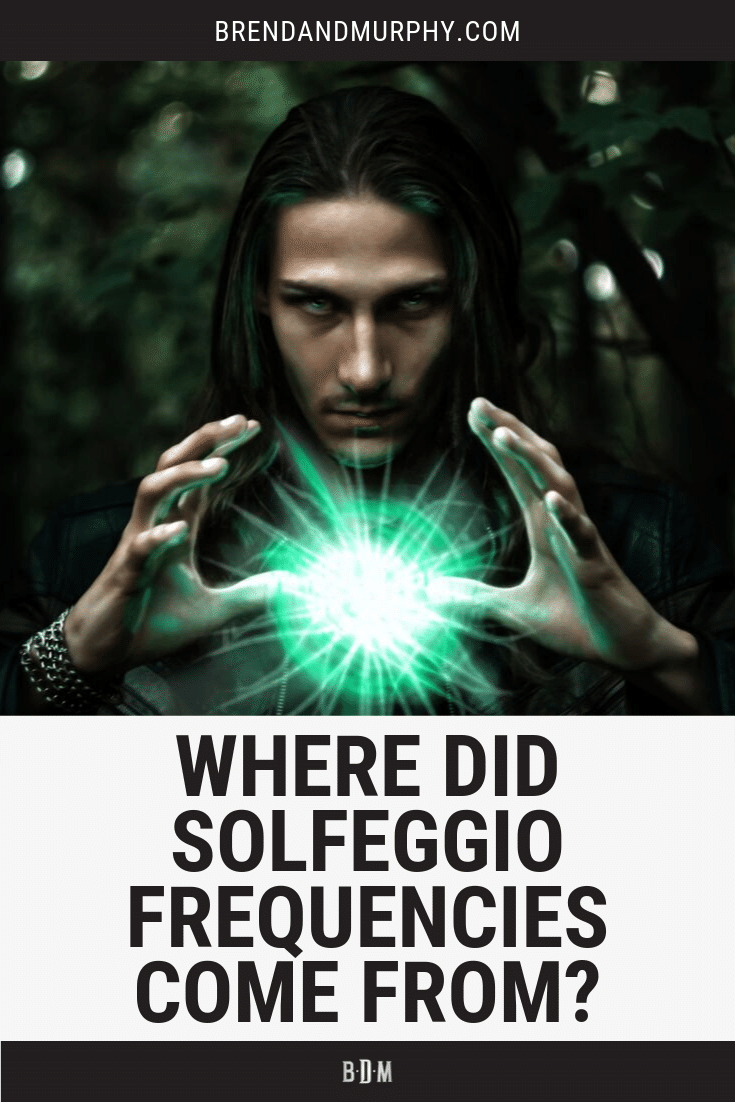The Mysterious Solfeggio Tones
Where did they come from?
To enter into the initiation of sound, of vibration and mindfulness, is to take a giant step toward consciously knowing the soul…Listening, learning, study, and practice are important tools. But we need the courage to enter into ourselves with the great respect and mystery that combines the faith of a child, the abandon of a mystic, and the true wisdom of an old shaman.
–Don G. Campbell, The Roar of Silence
Where Did Solfeggio Frequencies Come From?
Miracle healings. Exalted music. Suppression. Mystery. Intrigue.
These are just some of the evocative words associated with the increasingly popular “Solfeggio scale.”
But where did solfeggio frequencies come from and why should we care?
The answer is murkier than we might care to admit.
Though for a number of practitioners around the world (myself included), these tones are almost as quotidian as morning coffee (if you’re into that), these numbers are…enigmas.
Somewhat controversially, two men in particular are credited with the fact that anyone today is talking about the Solfeggio scale outside of musty, esoteric music theory circles. They are Dr. Leonard G. Horowitz, a Harvard-educated independent researcher, and herbalist Dr. Joseph Puleo.
Horowitz tells the origin story in Healing Codes for the Biological Apocalypse, which has its critics, specifically in terms of how Puleo apparently found the Solfeggio tones encoded in the Hymn to John the Baptist (and whether or not this story really rings true—no pun intended).
This, however, is not my main interest here.
To grasp this strange centuries-old saga and situation more fully, some basic Solfeggio history is in order. We turn to a piece of religious music from the eighth century.
Initially written by Paolo Diacono as a hymn to Saint John the Baptist (circa 720 - 799), the Latin words "Ut queant laxis, Resonare fibris, Mira gestorum, Famuli tuorum, Solve polluti, Labii reatum," translate to "So that Your servants may sing at the top of their voices the wonders of Your acts, and absolve the fault from their stained lips."[i]
The opening syllables of each line are emphasised below in all-caps:
UT - queant laxis
RE-sonare fibris
MI-ra gestorum
FA-muli tuorum
SOL-ve polluti
LA-bii reatum
Using the syllables ut, re, mi, fa, sol, and la as names for the six tones, C to A, an Italian monk named Guido d'Arezzo (990-1050) created the system of Solmization, a system of using syllables, especially sol-fa like syllables, to represent the tones of the scale (known as the Guido System). Later in history 'Ut' was replaced by the more easily singable 'Do,' and another syllable, si or ti, was added at the end, giving the scale of seven syllables called do-re-mi-fa-sol-la-ti…[ii]
So in d’Arezzo’s version the solfège syllable is the first note of each phrase, and the opening notes of each phrase were assigned as C, D, E, F, G, and A.
Though there is no universal, enforceable musical tuning, much of the contemporary Western world has standardized to A=440 Hz, as allegedly advocated by Joseph Goebbels and the Nazis. (I detail the story of what may have happened here) However, something interesting occurs when you tune A to 444 instead, which I’ll get to.
Much to the chagrin of some folk, Horowitz put the so-called Solfeggio tones on the public map with Healing Codes for the Biological Apocalypse and additionally in The Book of 528, wherein he documented how Puleo (or, “Joey” as he referred to his friend) supposedly de-coded a passage of the Bible in order to re-derive and identify the “lost” tones. (Again, this version of events is disputed by some people—something we can tackle elsewhere.)
While Puleo was researching the tones, he did some ringing around, trying to discover the significance of the opening lines of Diacono’s hymn to the Baptist. On the phone to a Catholic monsignor (a title granted to a distinguished member of the clergy by the Pope), Puleo inquired:
“Well then, could you tell me what ‘UT - queant laxis’ means?”[Pause]
Monsignor: “It’s none of your business.” Then he hung up.[iii]
One wonders why elements of the Church are so protective and guarded regarding this hymn—what else are we missing here?
But the redoubtable Puleo was undeterred.
Here’s the story as Horowitz tells it:
Joey knew there were six verses to St. John [the Baptist]’s sacred hymn. Each verse was chanted in a different ancient Solfeggio frequency. The sacred music, he knew, could resonate Water to Divinely anoint herbal formulas. Joey’s Catholic intelligence network could (or would) not provide the intelligence he sought. So, Dr. Puleo took his quest to Jesus, and prayed for the musical revelation.
Soon thereafter, Joey awoke to “a vision” of Jesus standing bedside, next to a huge angel. The vision did not disappear when he opened or closed his eyes.
Joey reported that while in this “altered state,” Jesus showed him a section of the Bible’s Book of Numbers, Chapter 7, beginning with verse 12 – wherein the six musical frequencies are hidden in the verse numbers. Joey found and deciphered them, without the aid of a computer….
The numbers: 396, 417, 528, 639, 741, and 852, provided the musical notes (i.e. Hertz frequencies) of the original Solfeggio musical scale. These were passed down to Levitical priests from ancient – pre-Egyptian – mystics. The Levites later encrypted the pure tones in the verse numbers of the Bible for posterity.[iv] (Emphasis added)
This is one (and not undisputed) version of how the rediscovery of what some are calling the Solfeggio scale came about, and I believe it is worth pondering that Horowitz is stating that the provenance of these tones are thoroughly pre-Christian, that is to say, “pagan.” (Gasp!)
Who first put these numbers together is anyone’s guess, though it could have been someone of education and knowledge—in a time where little of either existed among the (mostly illiterate) populace—an initiate or adept in other words, or possibly a seer with the ability to "download" information from the "quantum foam" or aetheric medium/hyperspace/zero point field.
I will refrain from discussing or reinterpreting the visions of “Jesus” in this short article, experiences clearly informed by—and predicated on—Puleo’s pre-existing Christian beliefs.
The upshot was that after the vision, Puleo worked out how each frequency was embedded in John the Baptist’s Hym, where it had, according to Horowitz, been buried centuries earlier by Levitical priests who hoped to preserve the information.
Seriously, Where Did Solfeggio Frequencies Come From?
Before we press on, we must note that this apparent re-discovery of the six tones now somewhat dubiously dubbed as the “Solfeggio scale” points to a glaring anomaly—one of a type that plagues the field of alternative history:
Without any technology to measure and indicate frequencies, how could anyone have precisely identified those six tones and known what frequencies they were?
(Tumbleweed rolls by…)
It is quite possible that prophets, diviners, or seers/psychics of the time (millennia ago) received these numbers through occult means, as if channelling them from the collective unconscious or quantum field—after all, these numbers are most definitely embedded in the matrix of creation, as mathematician Marko Rodin has shown, along with Vic Showell who has done excellent work showing how 528 fits into the matrix of creation.
In pre-Christian times they would—according to what we know—not have been able to correlate these numbers with musical frequencies, lacking a frequency-measuring technology.
D’Arezzo lived from the 10th to 11th centuries, where his six note solmization system originates from, but surely he could not have known the six “Solfeggio” tones, let alone measured them with any real precision?—unless perhaps my speculation above holds some water.
Never mind the fact that d’Arezzo’s “Fixed Do” system identified the first note of the scale (Ut/Do) as a C note, whereas with the modern “Solfeggio” scale, Ut is designated at 369 Hz, making the C note—Mi—528 Hz.
This situation presents as many questions as answers—if not more.
Yet here we are with this intriguing “Solfeggio” scale which consists of six mysteriously decoded numbers (now interpreted as frequencies) supposedly uncovered in the Bible.
They sound gorgeous, are used therapeutically the world over, and are also associated with paranormal healing and transformational events.
Yep, this is weird.
According to my colleague
, originator of the powerful Regenetics Method which incorporates usage of six Solfeggio tones, and which I employ in my Evolve Yourself program (explained here), “this primordial six note scale was dubiously ‘misplaced’ by the Catholic Church during the time of Pope Johannes in the 17th Century.”[v]The late Michael Tyrell in The Sound of Healing suspected that the process of suppression began even earlier in 590 AD with Pope St. Gregory “The Great,” when he began interfering with the church’s choral music upon assuming power. Gregory’s name is where Gregorian chant derives its name from.
Historians reported that the Pope reduced the multiple original intervals of the scale to just 7, then modified the ancient music accordingly. He compiled the altered chants in two books, Antiphonarium and Gradual Romanum…[vi]
By the year 1050 AD, the Church admitted to losing 152 of the original Solfeggios sung by the early Church prior to Pope Gregory. Along with those Solfeggios, 6 intervals or frequencies inspired by ancient Hebraic songs were also missing, seemingly forever.[vii]
I still have seen no one explain how the six contemporary “Solfeggio” notes could have been measured and known in this bygone era.
In other words, we don’t know for sure that the Church specifically knew about the six currently pegged “Solfeggio” tones (unless they somehow had learned of the tones but not necessarily their actual frequencies).
But then again, history is full of strange technology, archaeology, and correlations that “shouldn’t” be there (just look at the unbelievable math and references encoded in the Great Pyramid at Giza, for example, never mind the sheer immensity of the physical structure).
It is possible the Church had inherited the six frequencies (without knowing exactly what they were in terms of hertz) and simply adopted them as custom, tuning their instruments to match—but presumably they would have needed an existing instrument as an initial reference point.
I am aware of none so it all gets “curiouser and curiouser.”
If King David’s lyre was the reference point, used by the Church down the line, the question remains: how did HE find out about the frequencies?
In other words, we’re still asking: where did Solfeggio frequencies come from? How did we come to know about these numbers?
Speculation on Gregory’s unnecessary interference with the church music in the 6th century includes jealousy of the vocalists who commanded the awe and admiration of the flock through the beauty of their performances. The early church music reportedly elicited outbursts of weeping, joy, miracles, and peace.
According to Horowitz in The Healing Codes…, the Church hierarchy during Gregory’s reign deemed that the tones were too holy for the ears of man.[viii]
They had to be buried.
Ironically—and cloyingly—Pope Gregory was later named the Patron Saint of Music (which seems sort of like naming Bill and Hillary Clinton the Patron Saints of Innocent Children).
Another inversion of the order of things on a planet positively drowning in inversions.
Resurrecting the Solfeggio Tones
At the heart (pun intended) of the Solfeggio scale of today lies the homely note of 528 Hertz, a.k.a. “love Hertz.”
When I work vocally with the Solfeggio tones in DNA activations and sound-healings (see the free How to Evolve Yourself masterclass for more info), 528 always feels like the “tonal,” like I’ve come home again—it almost caresses the vocal chords as the air glides by. Its resonance and ease of singing always impress me.
I don’t care whether it’s a “true” Solfeggio frequency or not. It’s damned useful and bloody beautiful.
In terms of light (I’m aware light and sound aren’t the same thing), 528 nm waves also just happen to lie in the central (green-yellow) part—or heart—of the visible electromagnetic spectrum where chlorophyll harnesses the nourishing energy of sunlight in nature.
Coincidence?
“This ‘good vibration’ identified as the ‘miracle frequency’ at the heart of the ancient Solfeggio is, likewise, at the heart of the sound and light spectrum.”[ix]
A set of meanings has risen up around the tones; respectively, they are associated—albeit quite reductively—as follows:
UT – 396 Hz – Liberating Guilt and Fear - 9
RE – 417 Hz – Undoing Situations and Facilitating Change - 3
MI – 528 Hz – Transformation and Miracles (DNA Repair*) - 6
FA – 639 Hz – Connecting/Relationships - 9
SOL – 741 Hz – Awakening Intuition - 3
LA – 852 Hz – Returning to Spiritual Order - 6
Given on the right are the single digit numbers the tones’ digits add to using the Pythagorean skein. (I.e. for 528, 5 + 2 + 8 = 15; 1 + 5 = 6.)
Tesla said:
"If you only knew the magnificence of the 3, 6 and 9, then you would have a key to the universe."
Whether he was speaking about electromagnetism or sound waves is irrelevant.
Strongly linked to DNA repair,[x] 528 is by far the best known of the frequencies and features as perhaps the centrepiece of the Regenetics Method through which I perform those aforementioned activation ceremonies in my capacity as an ordained minister of the Universal Life Church (yes, you read that right).
528 and the other Solfeggio frequencies seem to be “universal constants” in some way, and are encoded into Pi, as Victor Showell has demonstrated.
Pi is
3.142857 repeating to infinity. When doubled, the constant evaluates to 6.285714 to infinity, etc. Remarkably, the digits to the right of the decimal point include transpositions of the Solfeggio frequencies 528 Hz and 741 Hz, which, when combined, produce a dissonant sound known, in musicology, as the “Devil’s tone.”[xi]
In the Middle/Dark Ages, musical composition was largely viewed as homage to Deity. Thus the interval in question, due to its dissonance and perceived unpleasantness (which it would have been in the context of choral church music) came to be called "diabolus in musica," meaning “the devil in music.”[xii]
The tritone, or so-called Devil’s tone/interval is simply an augmented 4th a crucial passing note in blues and rock.
Interestingly, this arrangement of Solfeggio-related digits to the right of the decimal point in Pi remains however many times the value of Pi is doubled.
Michael Tyrell detailed his own journey of discovery with the Solfeggio tones in The Sound of Healing. He, like Puleo, was both fascinated with the Solfeggio music and a devout Christian. Tyrell pondered on Biblical patriarch King David and his ten-stringed lyre/kinnor—an instrument dating back to Ur, the Sumerian city of ancient Mesopotamia that served as the womb for the Abrahamic religions.
David’s was, unlike other kinnors, made from the stronger wood of the cedarwood tree. Tyrell was trying to figure out why this was and what kind of tuning David used for his instrument.
I always imagined David tuned his kinnor [i.e. lyre] with some derivative of the note “A,” which in Western tuning today would be 440 Hz…. I also knew that David tuned higher than many of his contemporaries. Suddenly, I remembered page 222 in my Bible, as well as Isaiah 22:22. I asked myself, “What if I double them to 444? Could the tuning be 444?”
Then the bomb dropped! Could it be more than a note … maybe a key, THE key of David? There was only one way to find out!
I grabbed my guitar and tuned it to 444 (“A”) and there it was: 4 of the 6 solfeggio tones were right under my fingers
Thus, in the blink of an eye, Tyrell realised that the so-called “Key of David” was evidently a musical key.
Given my interest in this subject (and the fact that I’m a vocalist, guitarist, and songwriter) I feel like I would have figured out how to tune my guitar to reveal a few of these frequencies sooner or later, with a better guitar tuner that actually displayed hertz—and a little bit of experimentation.
Tyrell is correct: Tuning to A=444 gives you C at 528 Hz, G at 396 Hz, G# at 417, and Eb at 639 Hz (for guitarists to play this as an open chord they would tune the guitar down 1 semitone).
To be clear, A at 444 Hz is not one of the Solfeggio tones, but the key to unlocking 4 of them (on a guitar at least).
To get a little “New Age,” with you, the tones are believed by some to correspond as follows with these colours and chakra centres (implosive phase-conjugate vortices that harness charge and information) in the body:
852: Crown, purple
741: Third eye, indigo
639: Throat, blue
528: Heart, green
417: Sacral centre, generally labelled as orange, but bright red according to Tyrell (Note: this whole list/schema is an over-simplification - chakras aren't quite this straightforward)
396: Root/perineum, deep red
In my “healing” and “DNA-activation work” with sound in Evolve Yourself, I have seen the way that the contemporary Solfeggio tones can be powerfully paired with dual sound and light codes (vowel sequences) in order to trigger deep epigenetic changes in recipients—changes that ripple throughout their entire being and whole lives, fostering massive synchronicity and personal growth.
As a guitarist I’ve noticed the warm resonance of my acoustic guitar when tuned to C=528 as its chords have vibrated through my torso, massaging my cells. There is just something about 528 and the anomalous "Solfeggio" scale.
(For a comprehensive guide on how to play dissonant chords on guitar check out this free guide from Beginner Guitar HQ.)
So now you have a little taste now for my interest in this compelling arena.
I trust that this introduction to the Solfeggio frequencies has been interesting and hopefully now you grasp that answering the question "Where did Solfeggio frequencies come from?" is actually not as straightforward as we might have liked.
👉 To personally experience a transformational quasi-shamanic usage of these tones in real-time, check out my Evolve Yourself program. There’s a full explanation HERE in the free masterclass - we have a LIVE presentation coming this Tuesday CST! ⬅️
Click the link/s above for full details.
About Me/Brendan:
Host of Truthiverse podcast. Author of the epic, “The Grand Illusion: A Synthesis of Science and Spirituality — Book 1.” Founder of The Truthiversity 📽
🚨 For the FULL article and access to ALL of my premium multimedia content, become a member of The Truthiversity today
Links:
🧬 Watch my free How to Evolve Yourself Masterclass to discover how I help people accelerate their healing, evolution, and self-mastery organically without hard work or meditation.
If you’re not ready for the whole enchilada inside The Truthiversity, feel free to donate a subscription to support my work here - thanks in advance! :-)
References
[i] https://www.chantcd.com/lyrics/ut_queant_laxis.htm
[ii] Ibid.
[iii] See Horowitz, Healing Codes for the Biological Apocalypse.
[iv] Horowitz, Leonard G. Horowitz, The Book of 528, 2-3.
[v] Sol Luckman, Conscious Healing, 122.
[vi] Tyrell, The Sound of Healing, 63.
[vii] Ibid., 64.
[viii] Horowits, Healing Codes…, 345-6.
[ix] Horowitz, The Book of 528, 59.
[x] See Horowitz, Healing Codes…
[xi] Ibid.
[xii] Why is the Augmented 4th the "chord of evil" that was banned in Renaissance church music? https://www.theguardian.com/notesandqueries/query/0,,-1767,00.html
[xiii] Tyrell, 94.













I really enjoyed this one Brendan. I’ve done potentiation and a few more levels with Sol and I have a solfreggio album I listen to on Spotify to change my state as and when needed. It’s powerful stuff.
I love how you drew the connection between the wavelength of light at 528nm to the frequency of sound. This is probably the universal, central harmonizing energy mentioned by Ibrahim Karim, in the negative green band. Have you heard/watched Robert Gilbert's series Sacred Geometry on Gaia? He worked with Karim - was very well done I thought.